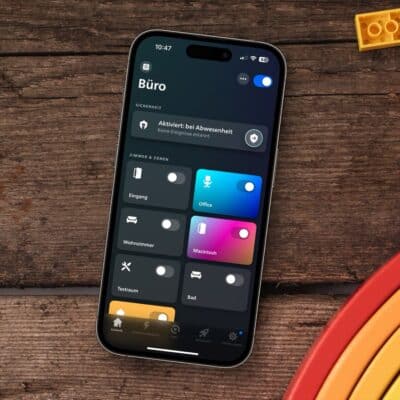Since yesterday, the Philips Hue Wall Switch Module is officially sold in the manufacturer’s online shop. I’d rather not judge the shopping experience now, at the moment the Wall Switch Module is not available to order either as a single or double pack. Unfortunately, I cannot judge to what extent the availability will change for the better in the next few hours or days.
After my first small review on Tuesday, I had a little more time to play around with the Hue Wall Switch Module. A more than interesting topic is the story with the toggle switch. How does it look when there are more than two light switches in a room?
At least in theory, an alternating circuit works. I have created the following test setup, which is absolutely safe away from live wires:
In the Hue app, the wall switch module is configured normally in “1 toggle switch” mode, but can then be controlled via both toggle switches. In principle, you can even quickly press both switches alternately to switch between scenes.
My example is only to show that a toggle switch with the Philips Hue wall switch module works in theory and that you can connect several light switches in the room to one input of the module. However, please remember that no instructions are shown here, but a thought-provoking suggestion is offered.
In practice there is a big problem
In practice, there is likely to be a problem: Between two light switches there are only the two cables for the toggle switch. However, one of them would have to be cut off to supply the existing lamp with continuous power. In a conventional, existing two-way switch installation, at least one cable is therefore missing.
For most users, there is probably only one easy-to-implement option: Each light switch in the room must be equipped with its own wall switch module. Depending on the room, however, this is not so bad – for example, the light switch next to a bed could be configured differently from the light switch at the room door.

Philips Hue wall switch module
$44.99 / £39.99 / €44,99
Note: This article contains affiliate links. We receive a commission for purchases via these links, which we use to finance this blog. The purchase price remains unchanged for you.






























Ah ok! I didn’t see this post before! This is the same I am proposing in the comments of the other post!
So it should work! It will be more “tricky” for non-experienced users but if you know what you are doing, with just one wall switch you could solve one or two rooms 😉
Perfect! Thanks for sharing!